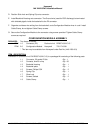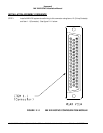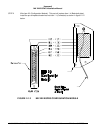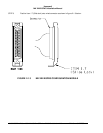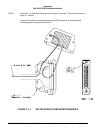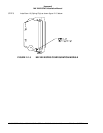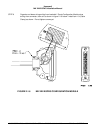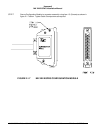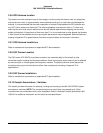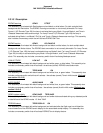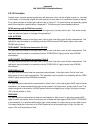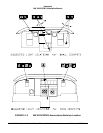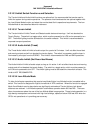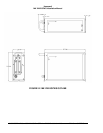
Honeywell
MK XXII EGPWS Installation Manual
CAGE CODE: 97896 SCALE: NONE SIZE: A DWG NO: 060-4314-225 REV: C
SHEET
44
2.3.6 GPS Antenna location
The antenna must be mounted on top of the fuselage. Avoid mounting the antenna near any projections
such as the rotor mast, or engine exhaust, where shadows could occur or high heat could damage the
antenna. It is recommended that there be a separation of at least 3 feet between the GPS antenna and
any VHF Comm antenna on the aircraft. The antenna baseplate must be level within ± 5° in both axis
when the aircraft is level (level is defined as the aircraft attitude required when weighing the aircraft for
weight and balance). If the antenna is tilted more than 5° or is mounted close to other objects that shadow
it, loss of some of the satellites will occur and system performance may be degraded. See manufacturer’s
drawing in Appendix D for specifications of antenna, antenna cables, and connector information.
2.3.7 GPS Antenna Installation
Refer to manufacturer’s procedures or applicable STC documentation.
2.3.8 OAT Sensor Location
The OAT sensor (CIC 05257) should be mounted on the underside (belly) of the aircraft or other
convenient location meeting the following conditions. Avoid mounting the sensor where it can be affected
by direct sunlight, or exhaust gases from engines or heaters. The probe tip should extend beyond the
aircraft boundary layer into the turbulent airflow. See manufacturer’s drawing in Appendix D for
specifications.
2.3.9 OAT Sensor Installatio n
Refer to manufacturer’s procedures or applicable STC documentation.
2.3.10 Cockpit Annunciators / Switches
This section provides information for selecting, locating and mounting of the MK XXII EGPWS Lighted
annunciators / switches. NOTE: The nomenclature given for each lamp is an example only. Other
manufacturers use nomenclature that is also acceptable. Refer to Honeywell Product Specification 965-
1590-601 for additional information and for electrical loads specification



